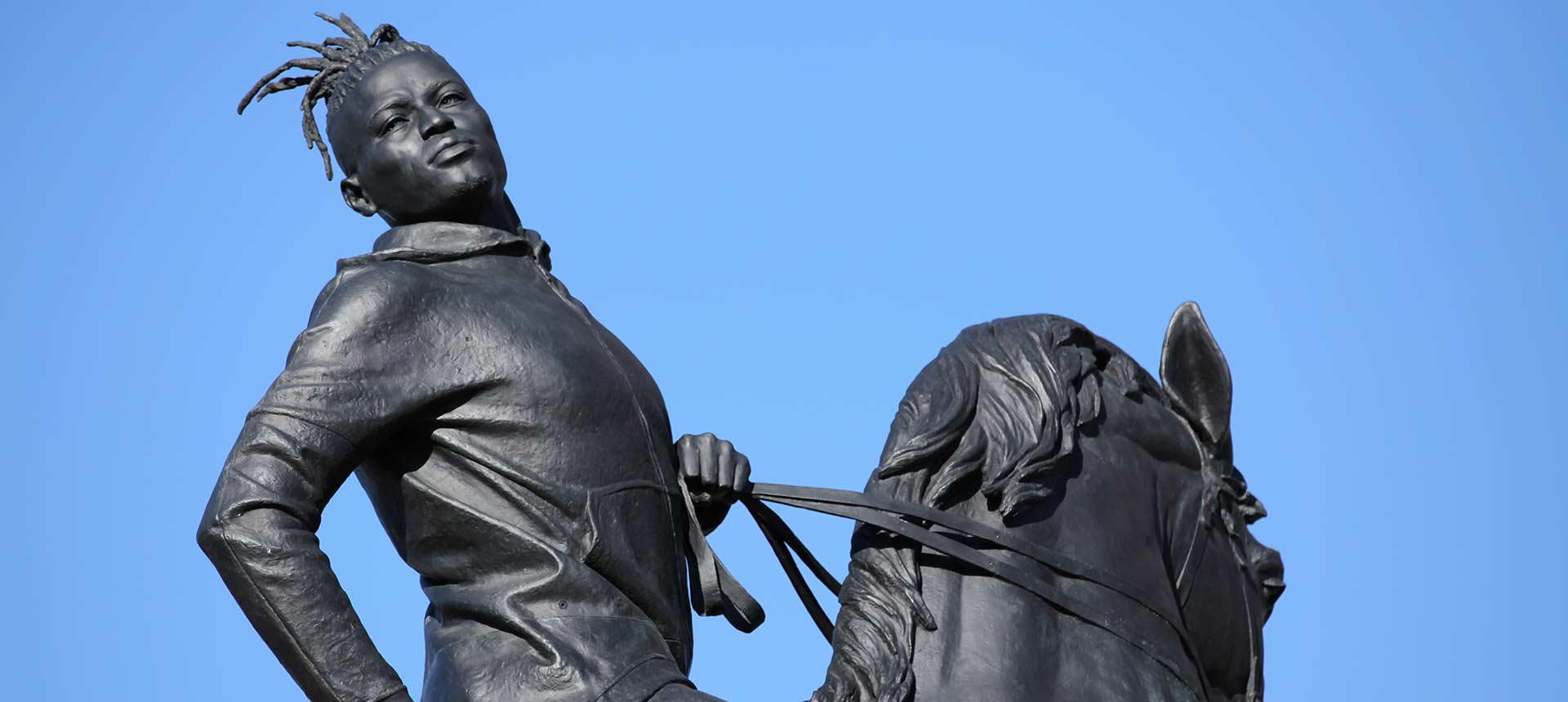
In a recent interview, former South Carolina Governor Nikki Haley talked about her decision to call for the removal of the Confederate flag from the South Carolina State House after Dylann Roof killed nine black parishioners at Charleston’s Emanuel African Methodist Episcopal Church in June 2015. While the Confederate flag was not the only one that Roof incorporated into his personal iconography — he also wore patches on his jacket bearing the flags of Rhodesia and apartheid-era South Africa — the undeniable link between the Confederate flag and the shooting made its continued public display at the South Carolina State House politically untenable.
According to Haley, the meaning that had been ascribed to the Confederate flag — that of “service, sacrifice, and heritage”— was “hijacked” by Roof, who used it as a symbol of white supremacism.
Haley’s comments made headlines and attracted criticism, renewing longstanding debates about the meaning of the Confederate flag and the appropriateness of its public display. Many commentators pointed out the deep ahistoricism of the claim that white supremacists had “hijacked” the Confederate flag as a symbol. The flag has always been an emblem of white supremacy, originating during a 19th-century attempt to create a slaveholder’s republic and remerging in the mid-20th century as a part of the broader white backlash against the civil rights movement.
The Meaning of Confederate Monuments
READ MORE
Conservative pundits came to Haley’s defense, claiming her comments had been misinterpreted. Haley also defended her comments on Twitter, blaming the “outrage peddlers in the liberal media” for distorting her views on the flag. From this perspective, Haley was making a descriptive claim about what the flag meant to others, not a personal interpretive claim about what it meant to her, even if she uncritically recirculated those ideas.
Historical Lens
While it is not difficult to find people willing to defend the Confederate flag in such terms, Haley’s comments amount to an equivocation reminiscent of late Senator John McCain’s contradictory statements about the symbol during the 2000 presidential primaries. In fact, surprisingly little has changed when it comes to the terms of debate over the Confederate flag.
Debates about the meaning of the Confederate flag are almost always examined through a historical lens. These historical approaches are necessary for understanding why the Confederate flag has reemerged as a potent symbol of white supremacy in a variety of socio-political contexts, from Strom Thurmond’s 1948 presidential campaign to anti-refugee rallies in Poland in 2017.
But they have done little to shift the American public’s perception of the Confederate flag. Despite repeated explications of the political history of the flag, public polling on the question of its meaning has remained largely unchanged since 2000. In fact, shortly after the Charleston shooting, 66% of white Americans said they viewed it as a symbol of Southern pride, not racism.
Why
is it that these attempts toward historiographical revision of the Confederate
flag fail to persuade the people who defend Confederate symbolism as a preservation of history? Perhaps
the answer lies not in how the history of the Confederate symbolism is understood,
but in how it is felt.
Emotions have a significant influence on political thought and behavior, from the feeling of hope we place in political candidates to the anxiety we feel while watching the news. Given this, we should also consider the kinds of affective responses that Confederate symbolism engenders. Doing so can sharpen our understanding of why misconceptions about the historicity of Confederate symbolism endure despite the routine debunking of the historical myths that inform these misconceptions.
Considering the significant role that “grievance on the South’s behalf” plays in the development of modern Southern identity can help make sense of Alabama Governor Kay Ivey’s defense of the state’s Memorial Preservation Act as a rejection of interference by “out-of-state liberals.” By identifying the feeling of encroachment that underlines many contemporary defenses of Confederate iconography, respondents can formulate counterarguments that directly address, rather than merely agitate, such feelings.
And
perhaps more importantly, incorporating affective responses into the terms of the
debate can provide a more robust understanding of the material effects that Confederate
symbols have in the present. This can help move us away from a restricted
debate about the “true meaning” of a given symbol, and toward a broader
understanding of what happens when such symbols circulate through society.
Feeling History Today
For example, less than a week after Haley’s comments sparked controversy, Kehinde Wiley’s “Rumors of War” — a bronze equestrian statute of a young, modern black man that appropriates the visual rhetoric of Confederate memorials — was unveiled at its permanent home at the Virginia Museum of Fine Arts in Richmond, Virginia, only two blocks from the erstwhile Confederate capital’s controversial Monument Avenue.
In an interview with “CBS This Morning,” Wiley described what he saw when he first encountered the Confederate statuary that punctuates the historic street: “I saw a spectacle that felt dreadful. I mean, it almost felt like it was designed to be menacing. To be in a black body walking through the streets of Richmond and to see something that signifies the enslavement of your people, that’s a little bit more heavy duty.”
Here,
Wiley explains what he saw in terms of how he felt while seeing it. The embodied
feeling of dread experienced while looking at Confederate monuments informed his
understanding of both the statuary’s meaning and its function, suggesting that if
the purpose of the monuments were to menace, that menace is still felt today.
There is no guarantee that staunch defenders of Confederate symbolism will find accounts such as Wiley’s any more persuasive than historical myth-busting has proven to be. But expanding the terms of the debate to include affective considerations illuminates the fact that although the effects of Confederate symbolism may be intensified by their history, they are experienced in the present. And for the 5,000 people who attended the “Rumors of War” unveiling ceremony, Wiley’s monumental intervention put a different affective experience on offer: one of humility and awe.
*[The Centre for Analysis of the Radical Right is a partner institution of Fair Observer.]
The views expressed in this article are the author’s own and do not necessarily reflect Fair Observer’s editorial policy.
Source: World Politics - fairobserver.com



